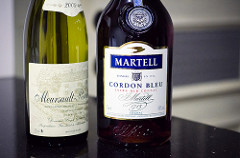Not much is known about the brain, but one thing that is certain is that adolescence is a vital time for its development. A new study at the University of Illinois at Chicago has found that binge drinking during this fundamental period of brain development may cause changes in gene expression and possibly affect behavior in adulthood. Binge drinking is defined by the NIAAA as a pattern of having a blood alcohol concentration level of 0.08 g/dL or above.
Researchers simulated the effects of teenage binge drinking by giving adolescent rats alcohol in an on-and-off, binge drinking type pattern. They observed that, in adulthood, the binge drinking rats showed anxiety-like behaviors and had a preference for alcohol. Analyzing brain tissue from the alcohol drinking rats revealed that the rats’ DNA was more tightly wrapped around the proteins known as histones. Genes on DNA that are tightly wrapped are expressed less than on those more loosely wrapped DNA.
Image source: Jacopin/BSIP
The main observed effect of this tighter wrapping is that the gene responsible for the production of synapses by nerve cells was less expressed. This makes the brain less able to change and develop as it is supposed to and is likely the cause of the observed increase in anxiety and alcoholism in the rats that were exposed to binge drinking in their youth.
The important thing to note is that these effects are not short term. A hangover may only last one day, but the change in gene expression due to binge drinking could last a lifetime. A survey by the NIAAA reported that 39% of college students engaged in binge drinking at some point in the past month. In addition, 90% of alcohol consumption by people under the age of 21 is in the form of binge drinking. Binge drinking is a widespread practice that is responsible for the deaths of an estimated 1,825 college students per year in the US due to accidents caused by the more immediate effects of alcohol. And we are only just beginning to learn the more subtle consequences of this behavior.
Feature Image Source: Alcohol by awee_19










